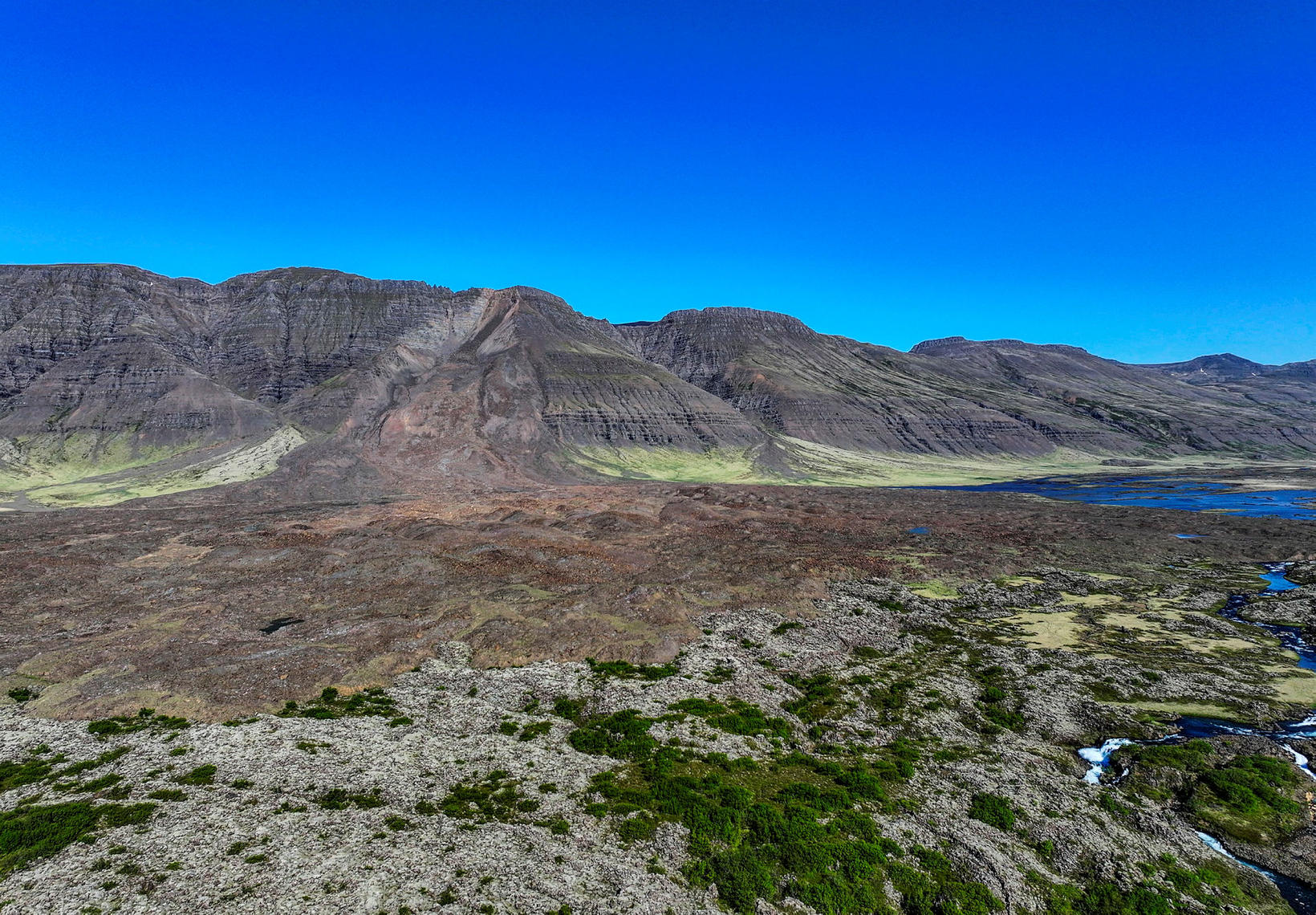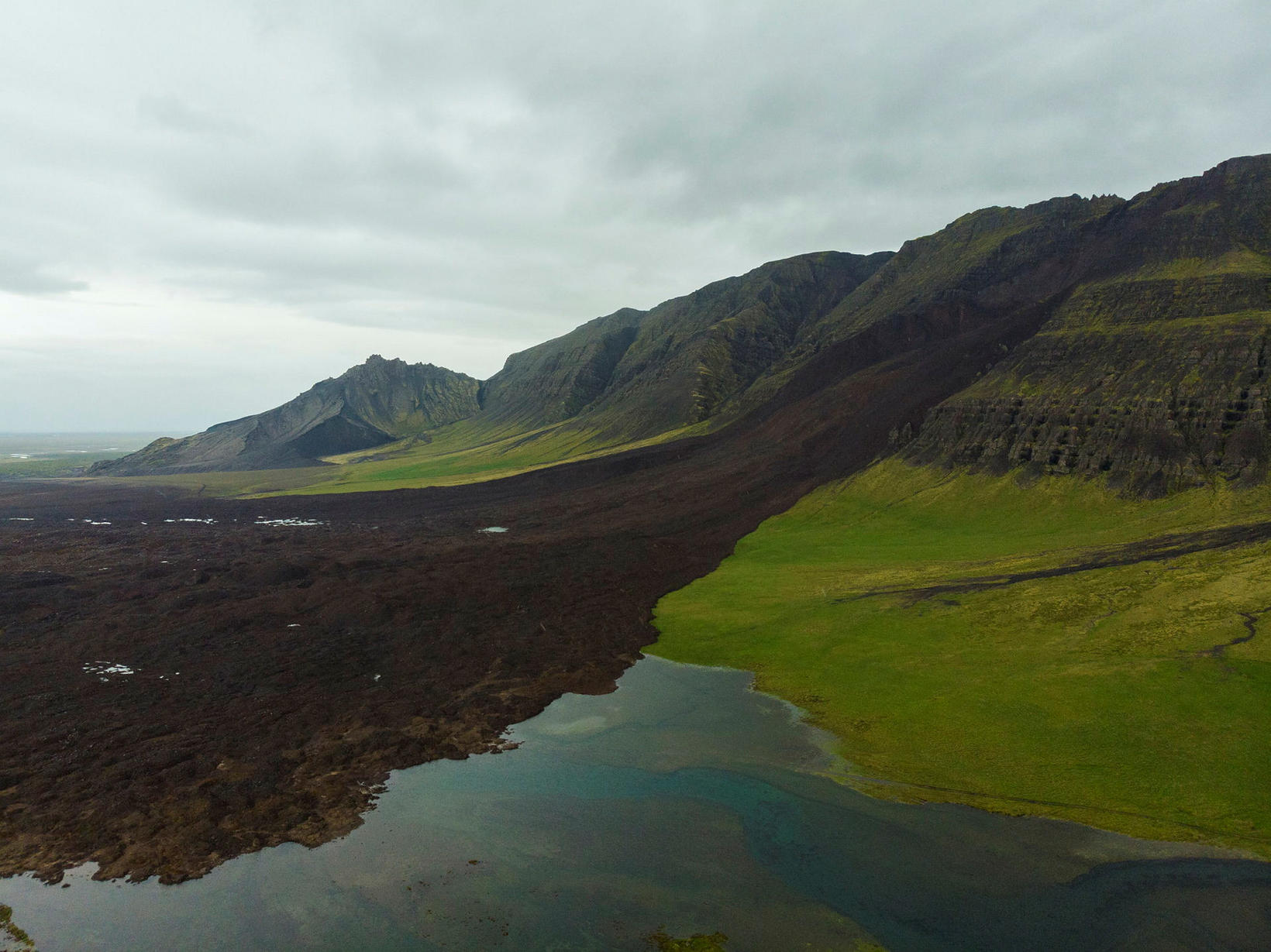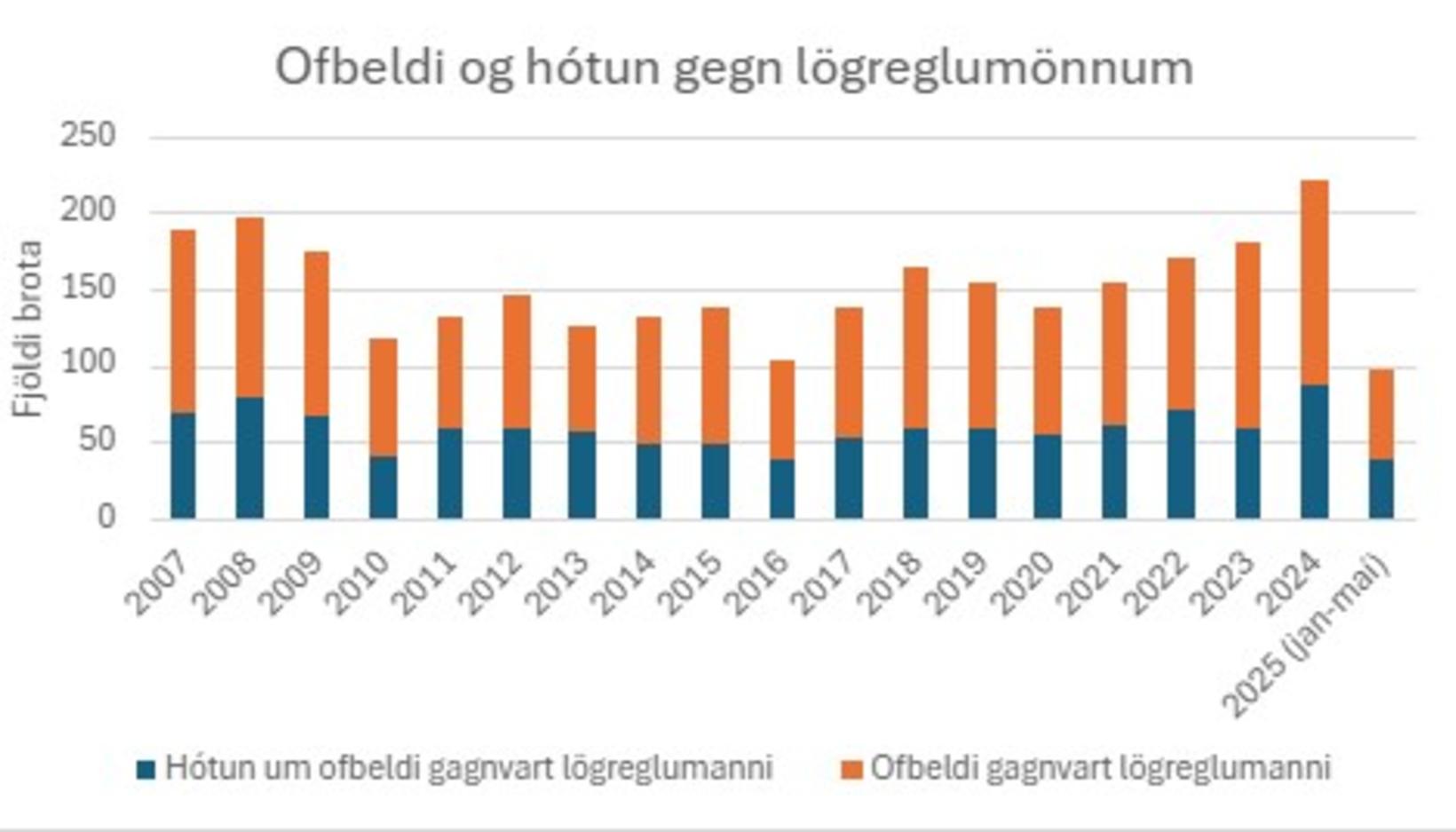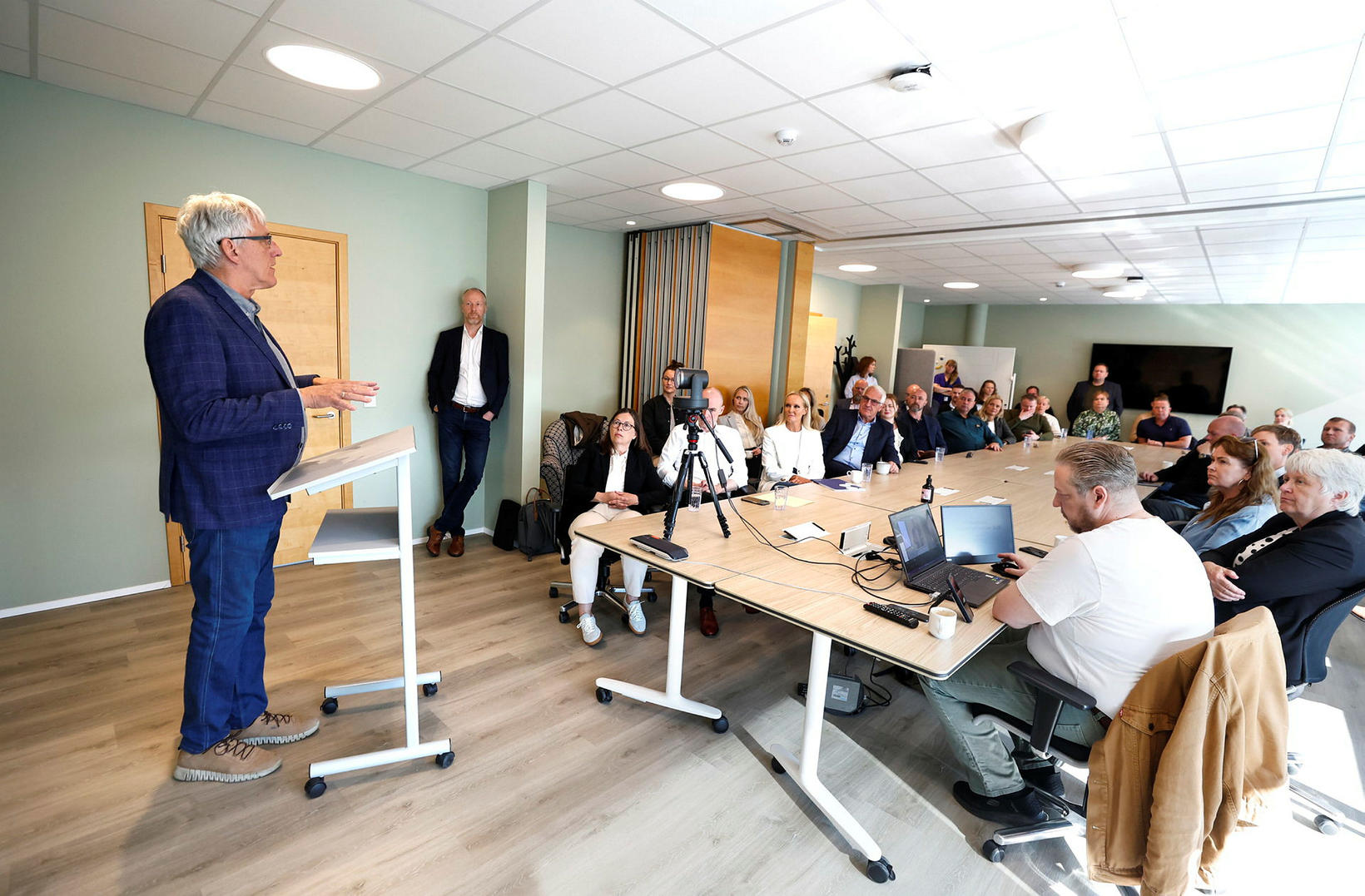Seven years later, the wound still faces

A great deal of landslides fell from Fagraskógarfjall in Hittardalur just under seven years ago this summer. The landslide had a great impact and changed the Hítará river. A large reservoir was formed north of the landslide for a while before the river found a new channel.
When a journalist and photographer Morgunbladid were on the move around Hittardal recently, it was not very trained to see the wound that still faces, as a lot of material fell from the mountain.
It was early in the morning of July 7, 2018 that a landslide fell from Fagraskógarfjall and blocked the river. Judging by the Icelandic Meteorological Office, it started at 5.17 pm. The landslide destroyed a lot of land under the slopes of the mountain. Just over 24 hours later, the river flowing from Hítarvatn had found a new channel and searched in the sideways of Táli, and flows there now.
mbl.is/eggert Jóhannesson
One of the largest
The Icelandic Meteorological Office’s experts estimate that between 10-20 million cubic meters of material has fallen in the crawl, of which 7 million were from Fagraskógarfjall before the landslide tore more material down the valley bottom. The landslide area is about 1.5 million square meters and where the crawl is thickened, it is 20-30 meters thick.
The landslide is considered to be one of the largest landslides that have fallen in historical time in Iceland, but in comparison the rock race in Askja in July 2014 was about 20 million cubic meters.
The landslide was observed at the Icelandic Meteorological Office at 5.17 pm on the morning of July 7. This is how the crawl looked out about a month after it fell.
mbl.is/kristinn Magnússon
Movements were measured in the mountain in the preceding
Experts believe that weaknesses were present in the mountain slope before the landslide started. For confirmation, satellite data has shown that movements were in Fagraskógarfjall in the years before the landslide started. The days before the landslide fell, those movements then moved a few centimeters, but in the preceding years, 2015, 2016 and 2017, the movement was smaller.
Heavy rains and solutions this summer are also believed to have had an impact to some extent. They have meant that water pressure in cracks in the area has been unusually high and the weaknesses caused the hillside to give itself in this place. Trausti Jónsson meteorologist pointed out at the time that rainfall in Hittardalur from May 1 to July 7 this year was measured by 260 millimeters. It would be a lot, but not a lot.
In comparison, more rainfall in the region was measured in 1999, or 300 millimeters.
Log in to read forward
Access to this full -length news requires a subscription.
To read it, you need to log in.
Don’t you have user access? Go to the registration.
Get a subscription to read on
You are in regulated that … But do not subscribe.
Access to this full -length article requires a subscription to Morgunblaðið, electronic access such as a weekly pass or a special subscription to the relevant content category on mbl.is.









